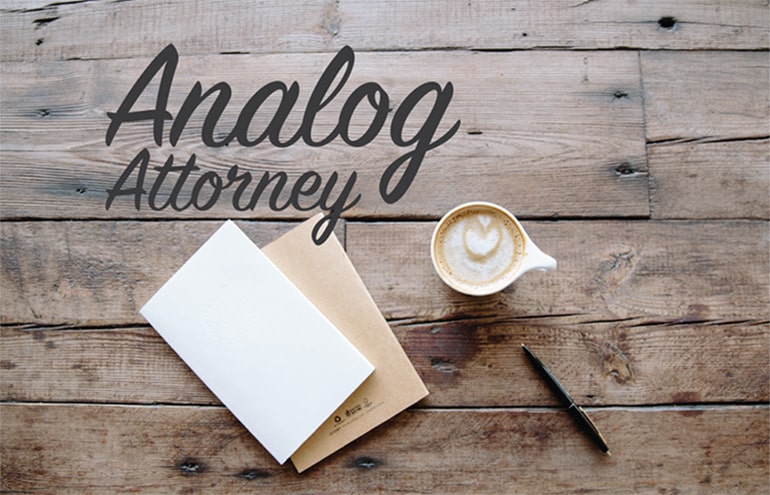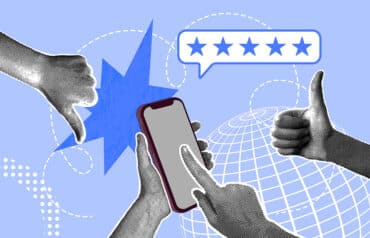Handwritten notes and the deployment of fine stationery can be valuable tools for piercing through the white noise of constant electronic communication.

Table of contents
Technology Lets Us Connect More Easily — at a Price
I can’t type the word “website” without careful and focused attention on the order of every letter. I just can’t. I type like a machine gun, so by the time I’ve misspelled w-e-s-b-i-t-e for the 900th time, I’m already six words down the line, hurling toward the end of the paragraph, and I just don’t have time to fix it. Thus, autocorrect is my regular savior.
Autocorrect, generative AI bots and every other advancement from quill and parchment have brought us closer to effortlessly producing the written word — lots and lots of words, in fact. A consequence is that we receive a daily avalanche of emails, Word documents and texts. It’s the downside of the paperless office: an endless gout of communication one can never stop. So much, so many, that eventually the constant ding of your inbox turns into white noise.
A handwritten note can be a valuable tool for piercing through the white noise that surely affects your clients, too.
Handwritten Notes Have Power
I don’t mean your clients don’t read your emails; of course, they read your emails. But those emails merely convey the information contained. Your client’s not going to print out your email, then hold it in their hand and think, wow, my lawyer went out of her way to write this. If you send a handwritten note that boosts the relationship, they will.
Most of the advice on the internet about handwritten notes is typical. Here is a quick list of professional moments that might prompt you to dash off a manual memo:
- After a promotion
- After someone does you a solid
- After a job interview
- After an important event
- After someone gives you their time
All worthy moments for knocking out a quick card — and you should. If you get promoted to partner, by all means, send your sponsor a little note on nice paper thanking her for seeing your potential and so forth. Of course. Because writing on paper instead of typing into thin air takes an actual moment of your actual time and actual effort — especially if you write the note in cursive.
Better Motivations for Writing a Note by Hand
But there’s a more meta-meaning. A note is real. It doesn’t live on a server. You can hold it in your hand. You can feel it. It’s a tactile thing: a luxury, a keepsake, a gift.
You use cards to show someone that what they did for you was so great they deserved an artifact of gratitude. You can communicate the exact same words using Outlook, sure, but that message will lack the physical card’s subtext: “I went out of my way a little because you rock” — and that subtext is everything. It tells your recipient you care enough to interrupt your insanely busy day and use a pen.
And they know it. Getting a card is a special moment. Every step requires effort: choosing the paper, choosing a pen, choosing your words carefully because you’re writing in ink and have limited real estate and can’t backspace if you make a mistake; addressing, stamping, mailing the envelope. When you receive such a card and hold it in your hand, the effort and thoughtfulness is communicated instantly by the fact that it exists. In that moment, you feel well regarded.
Don’t Wait for Birthdays and Promotions
Did you notice that in the earlier list, the motivations for sending cards are reactionary? Every occasion starts with “after.” Why not be proactive and send cards before they’re required?
Establishing a relationship with a client is vital to keeping them on board. Great service, excellent work, and winning cases form the foundation for a professional relationship. But the qualities that deepen that connection are intangible: respect, friendliness, access. Sometimes what makes a difference to them is entirely personal. It might just be that they appreciate your conversations. Let’s be real here: There are 50 other firms that can do your job. Long-term clients stick around because they like you. Sending a handwritten note without an event tells them that in a tangible way.
Don’t wait for something big to send a card. Find a reason. Mine that burgeoning or established bond. Here are a few reasons to send a handwritten note that have nothing to do with work but may help grow your affiliation with your client into a relationship by building on shared interests.
Background: You and your client both love the same sports team.
Motivation: That team trades a beloved player for a wild card. Fans hate it.
Content: “Seriously? Fernandez for Roarke? Switching to badminton.”
Effect: It humorously shows you remember something about them not related to the case.
Background: Your client is known to frequent the art museum.
Motivation: You just saw a new exhibit of Dutch masters.
Content: “Just saw the Vermeers at the Metropolitan Museum. Truly extraordinary. Blown away. I trust you’ll feel the same.”
Effect: It reminds them you share an appreciation for fine art.
Background: Your client has a well-known connection to France.
Motivation: You’re in Paris.
Content: “Wishing you a delightful day from the Champs-Élysées. The croissants, incroyable!”
Effect: It’s thoughtful. It shows you recognize something important about them.
Background: Your client is fashion-conscious and a snappy dresser.
Motivation: You just saw them in a TV spot wearing a killer neckpiece.
Content: “Nice tie.”
Effect: They will laugh out loud. You pay attention to them outside the case.
These are fictional examples meant to illustrate how a personal note can be pleasantly disruptive. Your clients will provide opportunities that are entirely unique. Of course, use your professional discretion — not every client has a sense of humor or wants you poking around in their cultural free time. But taking advantage of the often overlooked opportunities to send a handwritten note tells them they matter, that you’ll make an extra effort, that you recognize their singular qualities and how lucky you are to have them on board.
Get more Analog Attorney here.
Illustration ©iStockPhoto.com
Subscribe to Attorney at Work
Help us grow and get really good ideas every day: Subscribe to the Daily Dispatch and Weekly Wrap (it’s free).

















